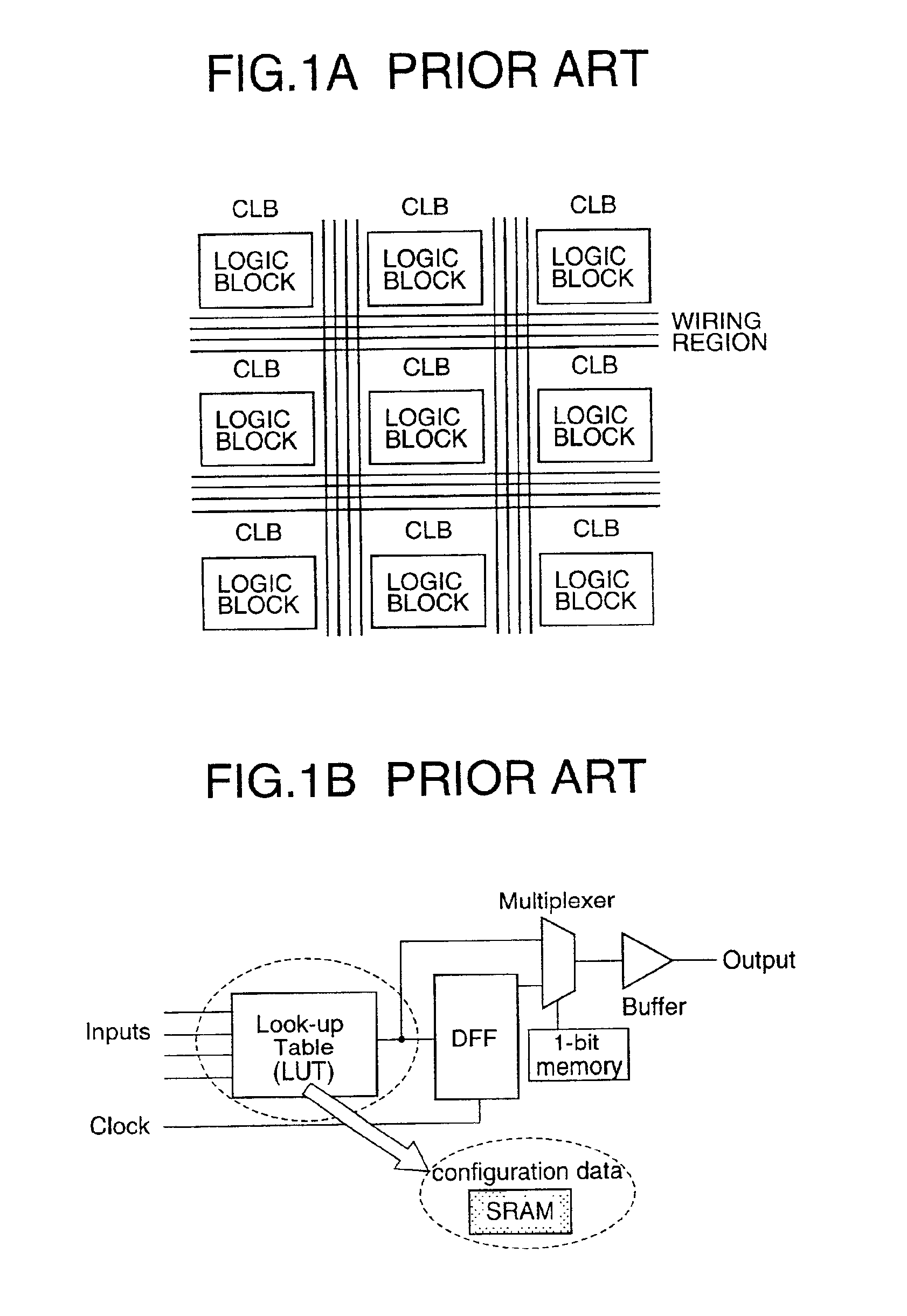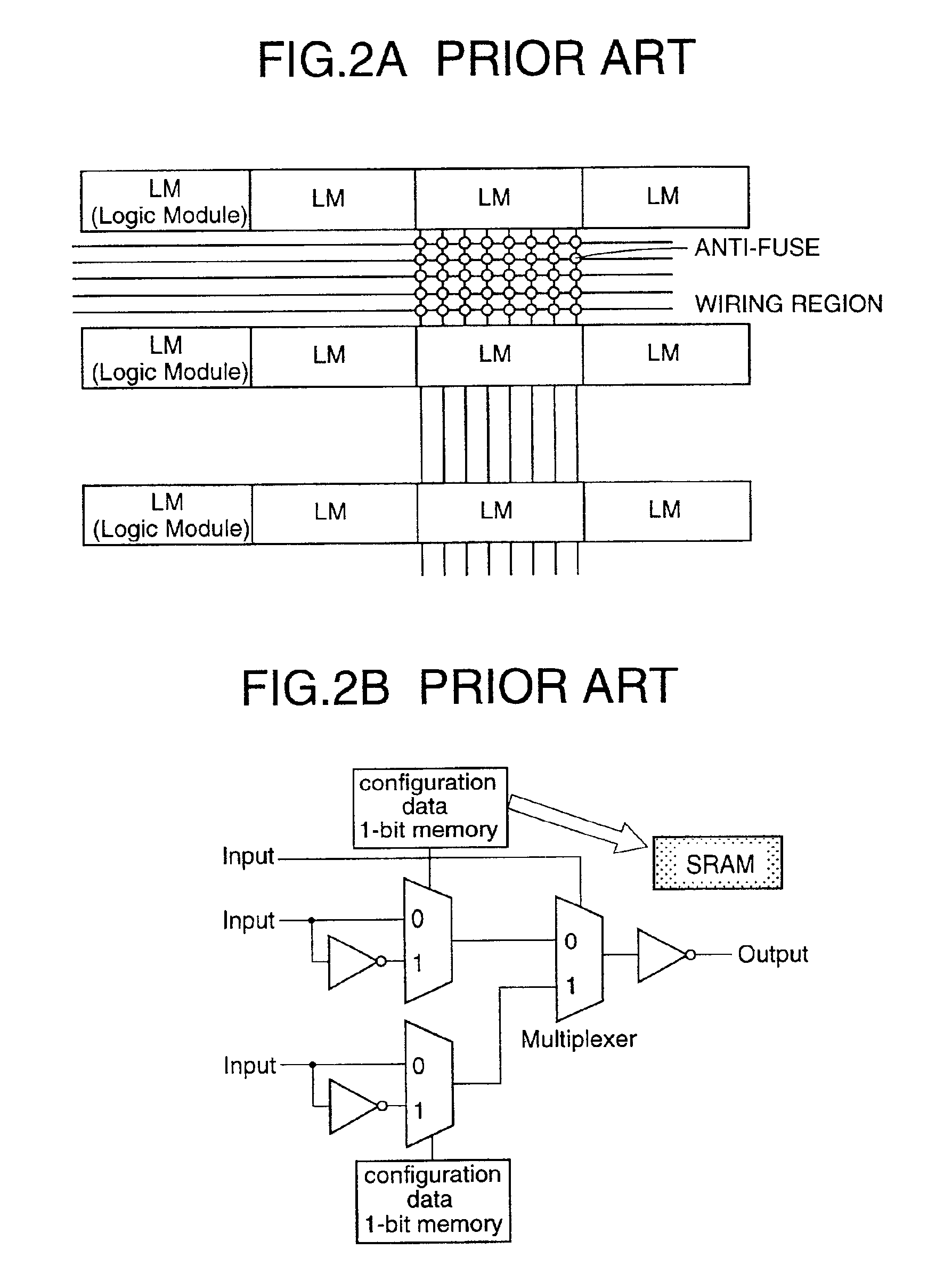Function reconfigurable semiconductor device and integrated circuit configuring the semiconductor device
a semiconductor device and integrated circuit technology, applied in pulse manipulation, pulse technique, instruments, etc., can solve the problems of difficult reconfiguration, large circuit scale, difficult reconfiguration of logic functions, etc., and achieve the effect of reducing the area used for implementing devices and circuits, logic capability, and reconfiguring function capabilities
- Summary
- Abstract
- Description
- Claims
- Application Information
AI Technical Summary
Benefits of technology
Problems solved by technology
Method used
Image
Examples
embodiment 1-1
[0325](Embodiment 1-1)
[0326]FIG. 7 shows a function reconfigurable semiconductor device according to an embodiment of the present invention. The function reconfigurable semiconductor device includes function cells 101 arranged like an array, wherein the function cells 101 are connected by wiring which can change a connection state. In addition, the function reconfigurable semiconductor device includes a centralized nonvolatile memory circuit 102 which is connected to the function cells via a control circuit block 104. Each of the function cells is an integrated circuit which includes after-mentioned threshold elements. Further, the function reconfigurable semiconductor device has an input circuit block 105 and an output circuit block 106.
[0327]In FIG. 7, input signal lines and output signal lines of the function cell 101 are connected to wiring provided between the function cells via elements or switches 103 which switch connection states.
[0328]The centralized nonvolatile memory cir...
embodiment 1-2
[0368](Embodiment 1-2)
[0369]FIG. 18 shows a function reconfigurable semiconductor device wherein nonvolatile memory circuits for storing function data are distributed so that each function cell has the nonvolatile memory circuit according to the embodiment 1-2 of the present invention. That is, instead of providing the nonvolatile memory circuit 102 shown in FIG. 7, the nonvolatile memory circuit 122 is provided to each function cell 121. The nonvolatile memory circuit 122 can be configured by an EEPROM circuit, a flash memory circuit, a memory circuit using a ferroelectric material or MRAM.
embodiment 1-3
[0370](Embodiment 1-3)
[0371]FIG. 19 shows a function reconfigurable semiconductor device wherein nonvolatile memory circuits 132 are distributed and provided in the function cells, and no wiring area exists. The wiring area is not necessary since the function cells are also used as wiring for the routing of interconnections among them.
[0372]A realizing method of the wiring for the structure shown in FIG. 19 will be described with reference to FIG. 8 and FIG. 20. The structures shown in FIG. 20 and FIG. 16 are similar except that switches are added in the structure shown in FIG. 20.
[0373]In the structure shown in FIG. 20, terminals input1[1]˜input1[3] and input1[2]˜input2[4] are configured to connect to the nonvolatile memory circuit. As mentioned before, by using the init signal shown in FIG. 8, the input variables input from the terminals input1[1]˜input1[3] are stored. That is, the input status number is fixed as a number. As described in the embodiment 1-1, the output value of th...
PUM
 Login to View More
Login to View More Abstract
Description
Claims
Application Information
 Login to View More
Login to View More - R&D
- Intellectual Property
- Life Sciences
- Materials
- Tech Scout
- Unparalleled Data Quality
- Higher Quality Content
- 60% Fewer Hallucinations
Browse by: Latest US Patents, China's latest patents, Technical Efficacy Thesaurus, Application Domain, Technology Topic, Popular Technical Reports.
© 2025 PatSnap. All rights reserved.Legal|Privacy policy|Modern Slavery Act Transparency Statement|Sitemap|About US| Contact US: help@patsnap.com



